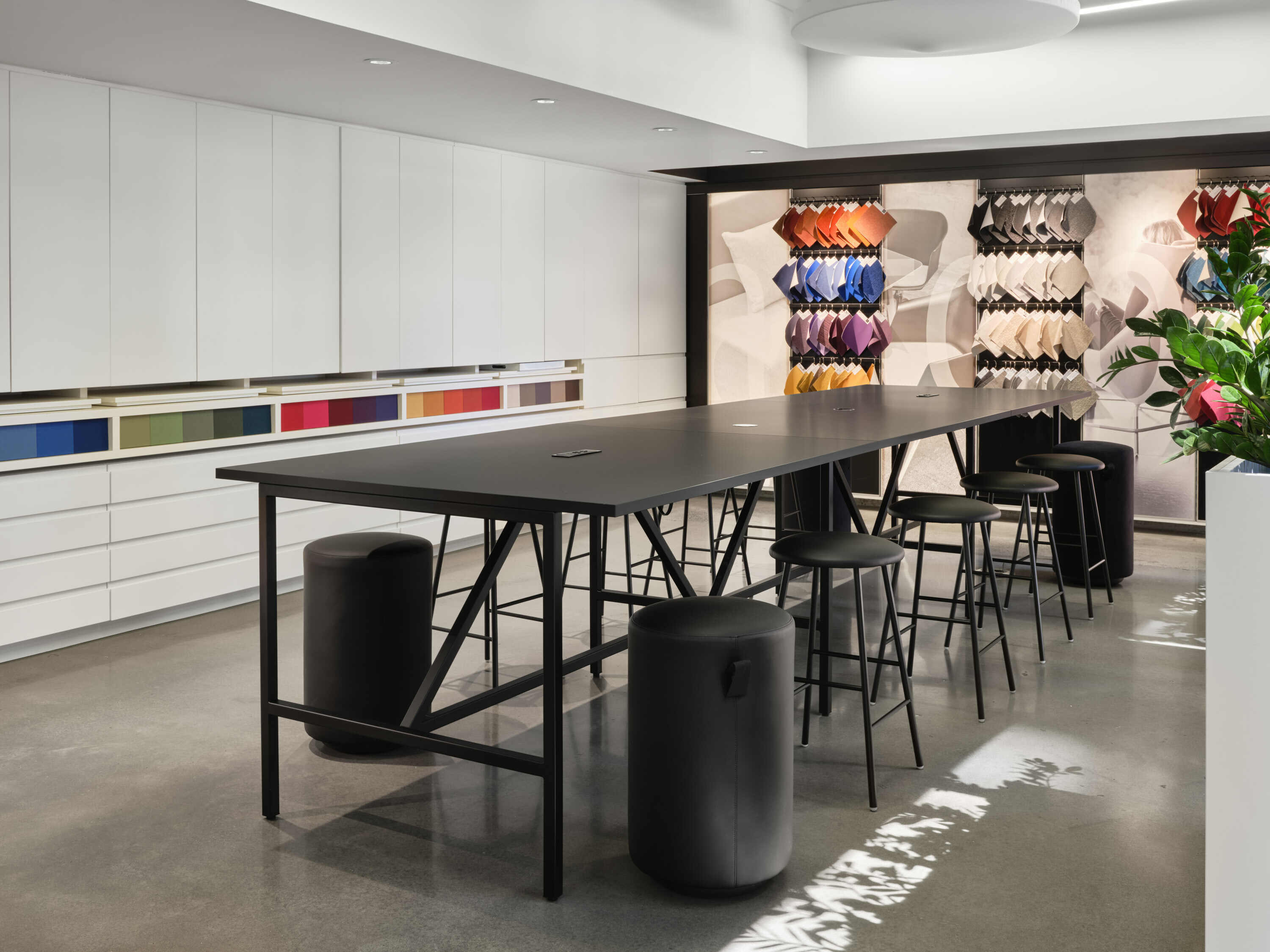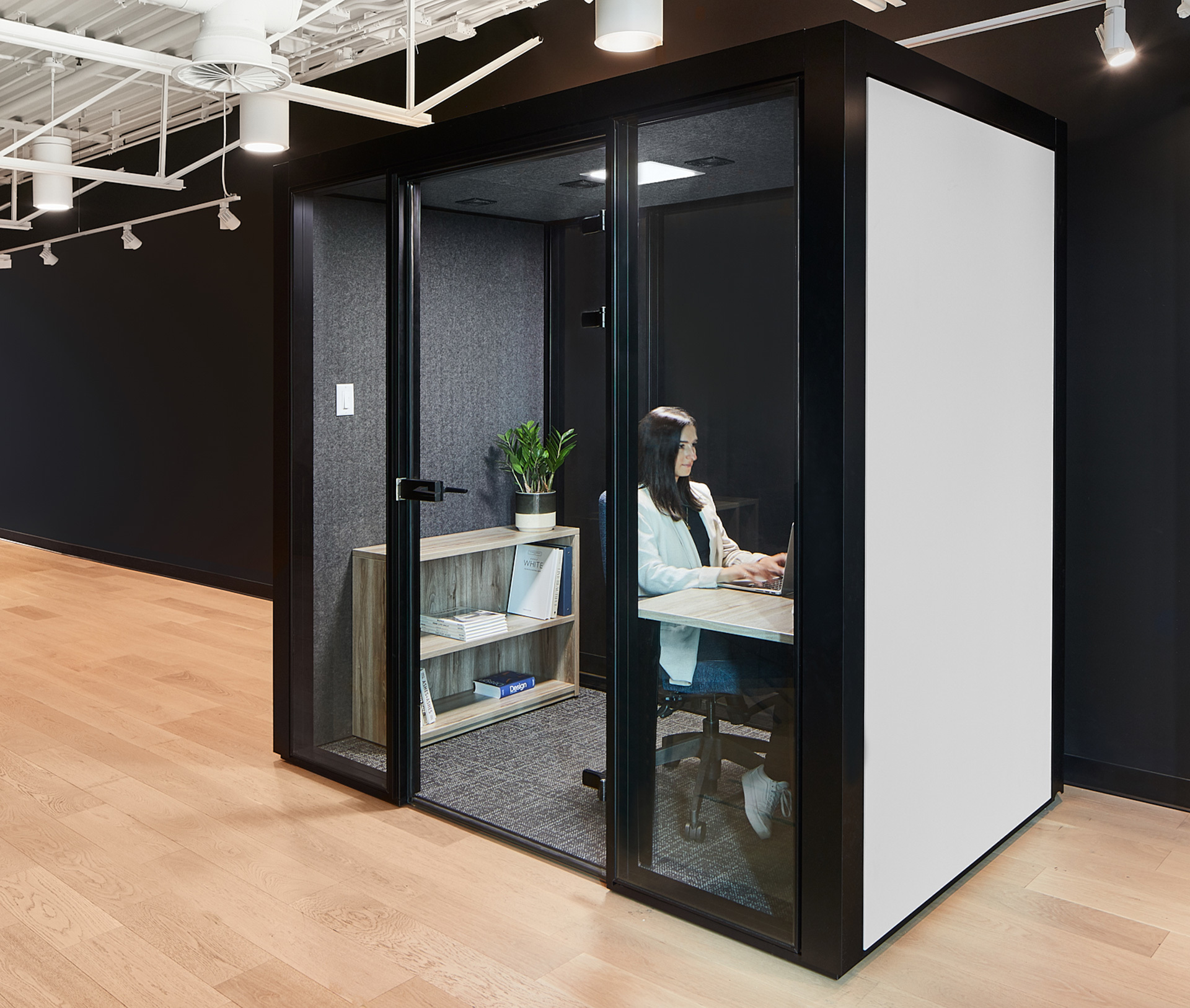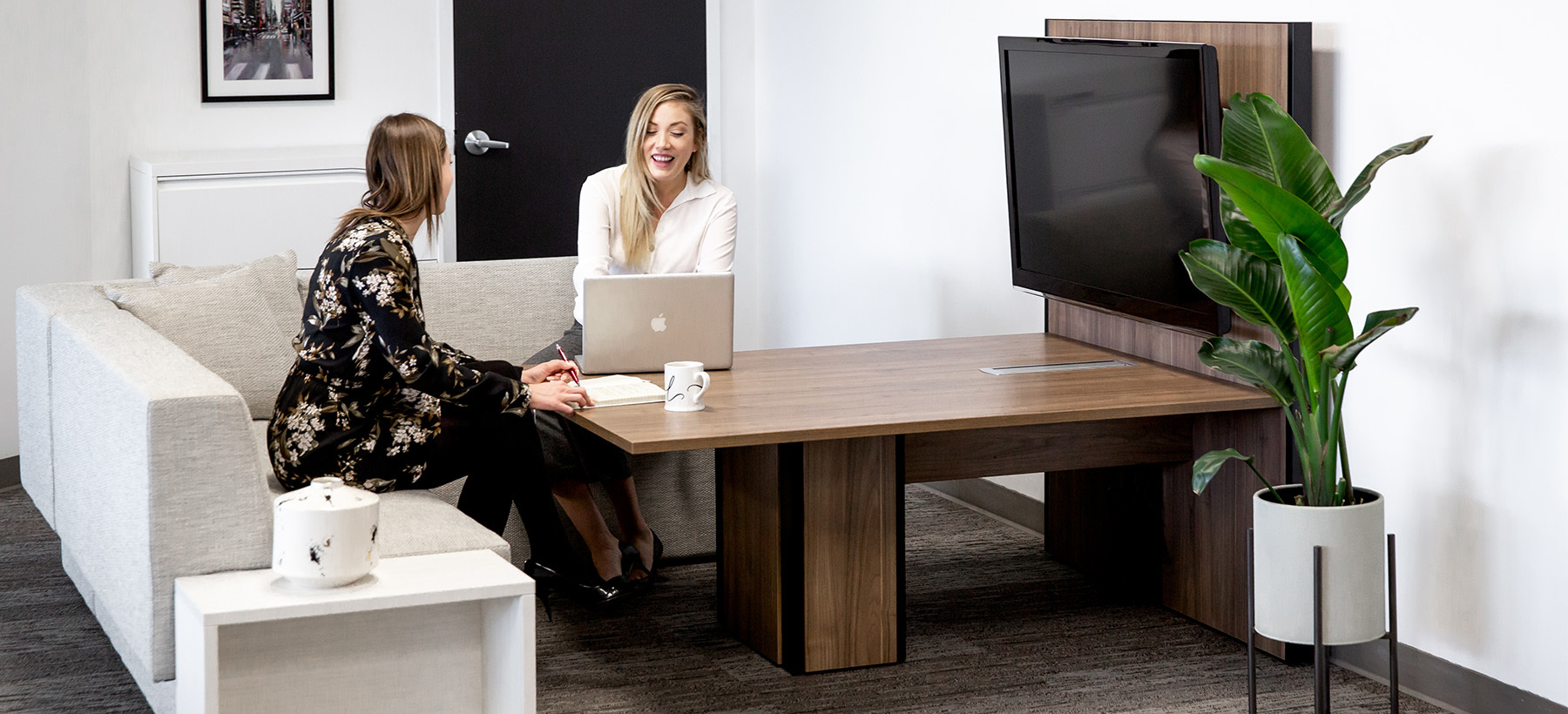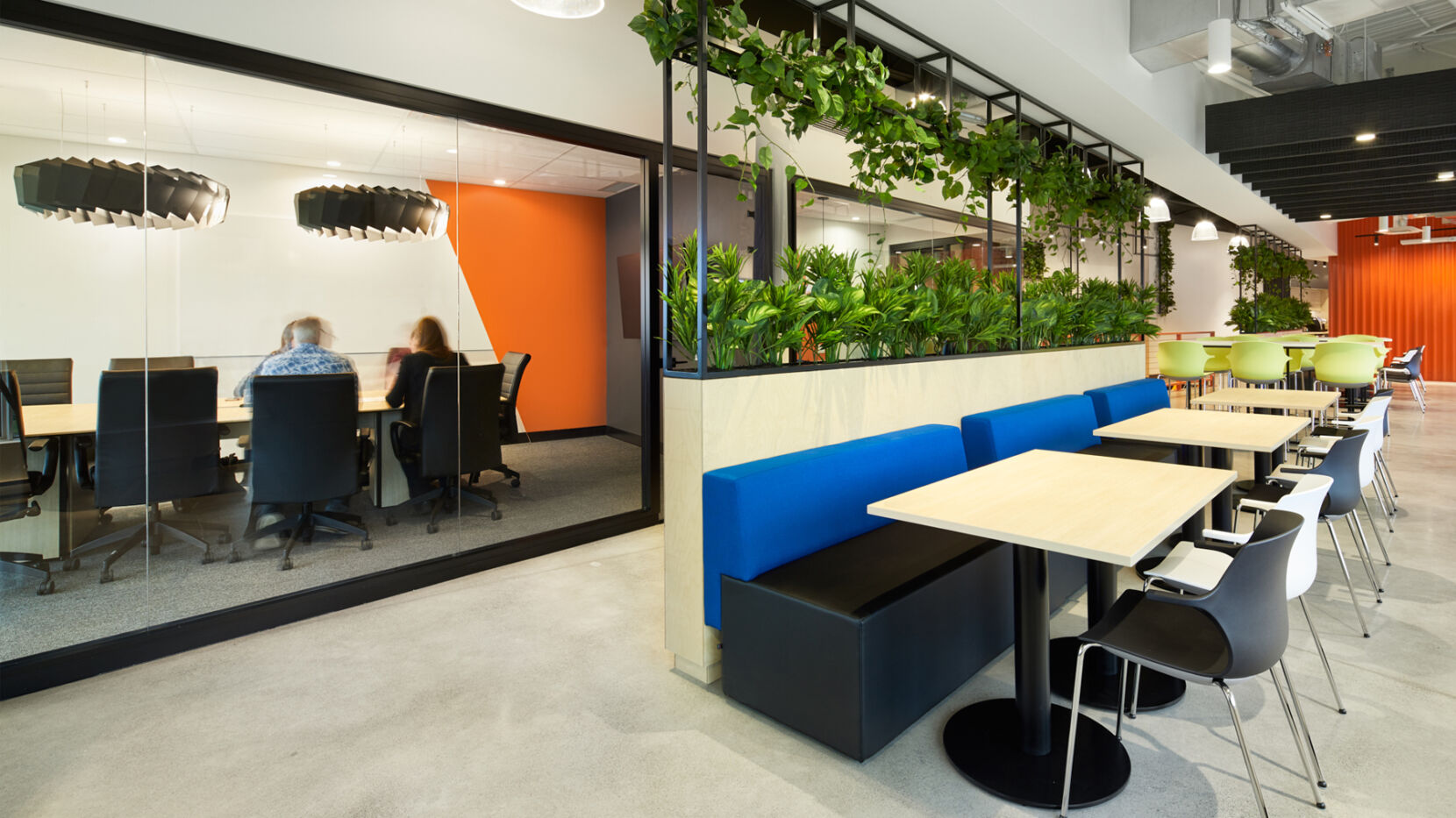Creating a Collaborative Workspace with the Right Furniture
Designing a collaborative workspace has become essential for modern businesses. Today, a well-planned layout not only boosts productivity but also nurtures creativity and team spirit. To create such an environment, choosing the right office furniture is key—it should facilitate interaction, provide comfort, and integrate collaboration technologies.
In this article, discover how thoughtful workspace design, supported by concrete furniture solutions, can transform your team dynamics and enhance overall efficiency.
How Open Workspace Components Foster Collaboration
In today’s workplace, where collaboration is a pillar of success, the office layout must support this need. Open-plan spaces encourage spontaneous interactions by allowing employees to move around freely and communicate without physical barriers.
Fixed acoustic panels – Even in open spaces, fixed acoustic partitions like those in the Axel collection can be installed to absorb noise and limit distractions. These elements help preserve a sense of privacy while maintaining an environment conducive to conversation and teamwork.
Visual dividers – Adding desktop partitions helps create semi-private zones that reduce visual distractions without blocking proximity between colleagues, encouraging quick and informal exchanges.
Furniture Solutions that Support Brainstorming
Brainstorming areas are vital for companies seeking to encourage innovation and idea sharing. Proper layout and furniture create a space where everyone feels free to contribute.
Comfortable lounge chairs – In brainstorming zones, cozy seating like chairs from the Downtown collection allow teams to sit back and share ideas comfortably. Arranging them in a circle promotes eye contact and participation.
High tables – Pub-style high tables, paired with Rudi stools, are perfect for quick stand-up discussions. They offer a dynamic setting that supports informal conversations.
Acoustic panels – To ensure good acoustics in brainstorming areas, use fabric-covered or felt acoustic panels to absorb sound and minimize noise distractions.

What Materials Improve Acoustics in Collaborative Spaces?
Sound management is crucial in collaborative environments to balance interaction with focus. The materials used in your design play a significant role in acoustic quality.
Felt panels – Acoustic materials such as felt and fabric help reduce echoes in open spaces. Felt can be used on partitions, walls, or even ceilings to optimize sound absorption.
Carpeting and sound-absorbing flooring – The choice of flooring matters too. Carpeting and other soft surfaces help reduce ambient noise and create a calmer work atmosphere.

What Types of Chairs Should You Include in a Collaborative Space?
Comfort is key to successful collaboration, especially in spaces where employees spend long hours. A variety of seating options ensures adaptability to different work styles.
Adjustable ergonomic chairs – In meeting rooms or collaborative areas where people sit for extended periods, ergonomic chairs like Nexus, with lumbar support and armrests, ensure maximum comfort and help reduce fatigue.
Lightweight stools – For informal areas, easy-to-move stools allow teams to gather quickly for spontaneous chats. They’re also space-saving when not in use.
Lounge chairs – In more relaxed, creative zones, armchairs from the SC Lounge collection offer inviting comfort and a casual space for informal discussion.
How to Integrate Collaboration Technology Into Your Layout
Integrated technology makes collaboration easier—whether in person or remotely. In the era of hybrid work, it helps teams stay connected and productive.
Built-in charging stations – Outlets and USB ports built into desks and tables help employees stay connected without interruptions.
Interactive displays and digital whiteboards – These tools are essential for sharing ideas in real time, making meetings more dynamic and inclusive, even with hybrid teams.

Why Private Spaces Still Matter
Even in collaborative work environments, private spaces should not be overlooked. While collaboration is key, employees also need quiet time to focus.
Soundproof booths – Installing soundproof pods like the Mute Box provides employees with a quiet space for calls or focused work. These are especially valuable for tasks requiring concentration or confidentiality.
Quiet zones – Quiet areas using wall and ceiling acoustic treatments, such as those in the Axel Pavilion, reduce sound distractions. These zones provide peaceful environments for productivity, even within open spaces.
Creating a collaborative workspace relies on selecting the right furniture and implementing practical solutions that foster teamwork. Ergonomic seating, acoustic partitions, and integrated technology are essential assets for building an effective work environment.
By investing in thoughtful layout design and materials that enhance comfort and acoustics, companies can create spaces where collaboration flows naturally, ideas thrive, and productivity rises.
Looking to build a better collaborative space? Discover Artopex solutions designed to inspire connection and innovation.
